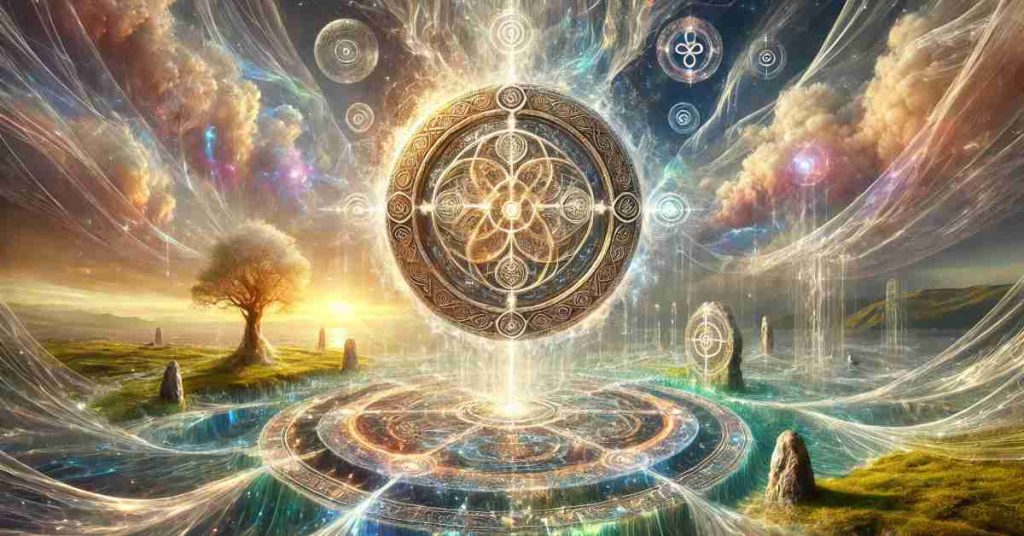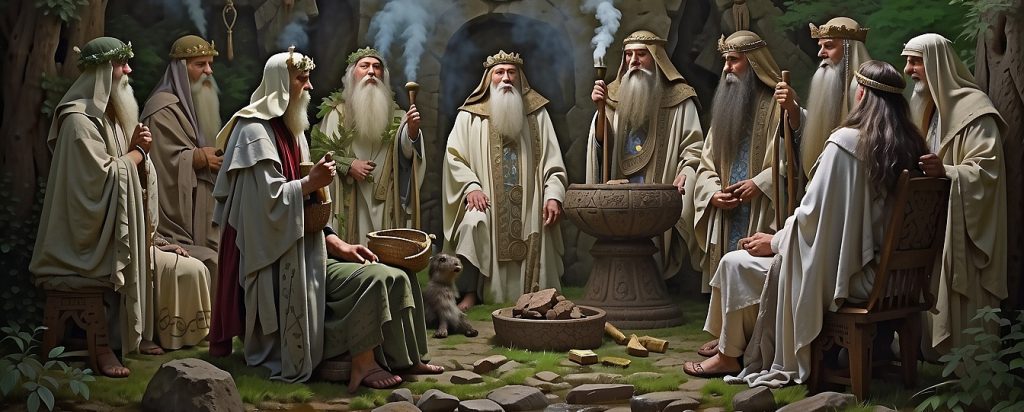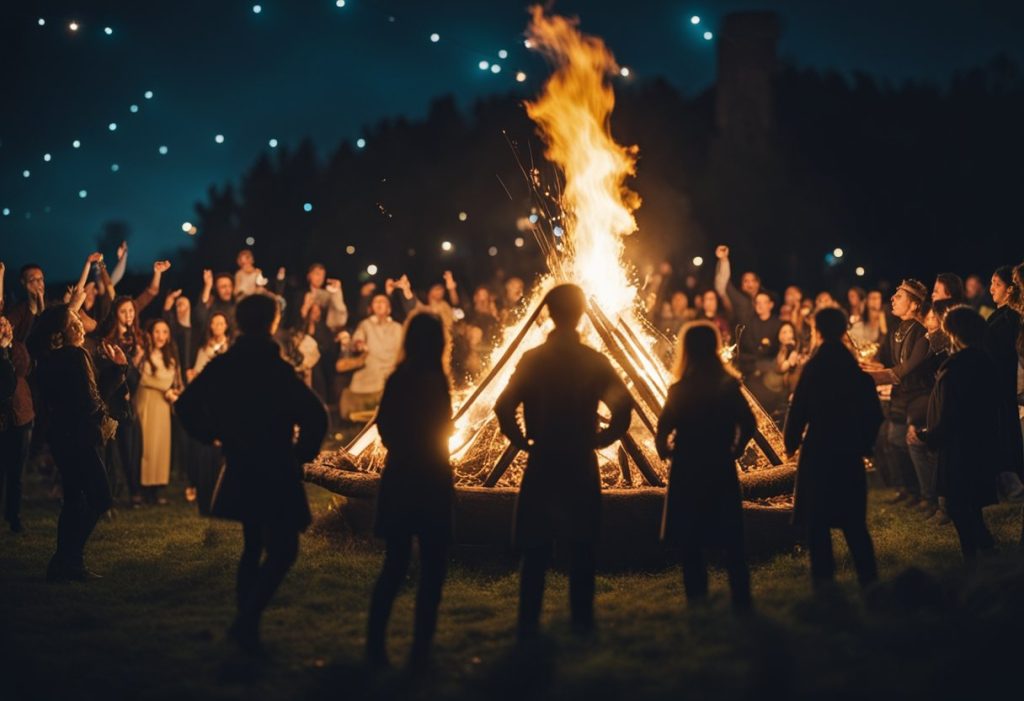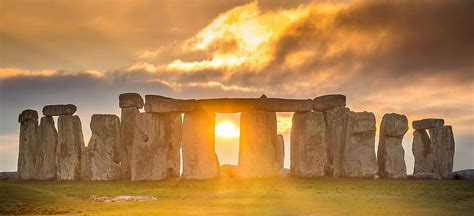Summer Solstice, Celtic Traditions
The Summer Solstice is celebrated on our around the 20th of June in the Northern Hemisphere. The Summer Solstice occurs when the axial tilt of the earth is at its closest to the sun. It has more hours of daylight than any other time of the year, making it the longest day of the year.
People around the world will mark the event in various ways. While different ancient cultures had different traditions, some of the most time-honoured and world-famous were those undertaken by the Celtic people.
The Summer Solstice was one of eight sacred Celtic days where the Celts would take time to celebrate through a variety of customs. They used ‘Natural Time’ taking their lead from the Solstices and Equinoxes to determine the seasons. This is in contrast to the Gregorian calendar that has been adopted today.
In Scotland, the Gaelic, Solstice is "Grianstad", literally 'sun-stop' and this is one of the two great peak moments of the light and dark interplay in our universe. Directly opposite Winter Solstice, this Saturday is the peak of the sun's highest climb into maximum light. However, it is the earth which is on an elliptical orbit around the sun which uniquely brings about this phenomenon.
For several days after June 20th, the hours and minutes of daylight will remain almost exactly the same and near June 25th, the light will imperceptibly begin to lessen as we move deeper into the second half of this season.
In Ireland, the Celtic ancestors understood interconnection — how we have a relationship with all things. The ancient ones marked the seasons and cycles of birth, death, and rebirth in nature. They honoured the eight pivot points of the Wheel of the Year with ritual and ceremony.

This medicine wheel (as with the North American indigenous cultures) is a map that holds a lot of wisdom for us today. Its purpose is to orient people back into a sense of connection with the land, with nature and belonging with something bigger. It can guide people into ‘time out of time’ which is so important in this age of overwhelming acceleration.
The medicine wheel was a representation of the universe. It played a pivotal role in solstice celebrations and was used as a tool for teaching and understanding the dynamics of life. This sacred symbol illustrated the interconnectivity between all living things and the cycles of nature.
The Celts believed it was a time to honour their Goddess who went by many names, depending on which Celtic region they lived in. For example, in France she was Epona, but in Ireland she was Etain, the Shining One or Sun Goddess. It was also a time to banish evil spirits and open up a path towards light and abundance which for The Celts meant a good harvest. Feasting and dancing took place and bonfires were lit in celebration.

In Celtic tradition, druids held a central role in the observance of solstices. These occasions were pivotal to the druidic calendar and encompassed deep ritualistic importance. As mediators between the physical and spiritual realms, druids would orchestrate ceremonies that celebrated the themes of rebirth and the cyclical nature of life.
During the summer solstice, the Oak King, symbolising strength and endurance, was celebrated as the ruler of the waxing year. Conversely, the winter solstice honoured the Holly King, representing the waning year and reflective of quieter, introspective times. These two figures were central to the druidic mythology, embodying the transition from light to darkness and vice versa.
Summer Solstice Rituals: Fire, as a purifying element, would often be a focal point, with the lighting of bonfires.
In terms of specific practices, drums and other percussive instruments framed the rhythmic backdrop for these sacred gatherings. The resonant beats were integral to guiding the flow of energy within the rituals and facilitating a trance-like state among participants.
Today, we commemorate and celebrate the profound knowledge of nature that the druids of old possessed and their ability to weave these elements into deeply meaningful and resonant practices that have stood the test of time. Their role in the observance of solstices was a testament to their skill in ritual crafting and their understanding of the natural world.

How to celebrate the Summer Solstice?
This is a time for lighting bonfires, especially on hillsides, leaving gifts for the fairies in your garden, making a flower crown and harvesting wild herbs for syrups, meads, salads and teas.
Collect the herbs abundant in the hedgerows right now: Elderflower, St John’s Wort, Marjoram, Nettles, Vervain and wild rose. Drink a brew of your local Mugwort tea to awaken your visions.
Visit a sacred site. Gather with others to create a circle or spiral. Exchange songs, stories, and poems with others. Dance, drum, sing and celebrate. Involve water in your ritual. Prepare a ritual bath with seasonal flowers and oils or take to the ocean for a salty solstice swim at dawn.
Set out on a quest to find an oak tree that you can sit with. For generations, people have sat beneath the mighty oak to gain strength and spiritual renewal. Thank the tree before you leave, as this helps to create a connection and relationship with the wild world.
This is also a great time to go inwards and reflect. Focus and feel into your senses: Feel your feet on the grass, and notice the smell of the flowers and the sound of the rustling trees. Meditate on the past season and dream about the season ahead. Celebrate the nourishing light of the sun and honour the harvest of your life.
Just as the ancients understand Solstices as turning points of transformation we too can harness the power of the sun and celebrate our resilience as ancestors-in training. As we fly closer to the Sun we are invited to re-wild our imagination as we soar. This ‘peak‘ moment is an invitation to return to our senses and rekindle a connection to our untamed nature.
A Little Trivia
The name of the moon that occurs in June is ‘Mead Moon’ or ‘Honey Moon’. The first honey flow of the year begins in the early spring months, so by the time we reach the month of June this flow is in full force and there is (or was in traditional days) an abundance of honey to be harvested.
Traditionally honey was used to create a drink called ‘Mead’ which was drunk copiously at celebrations, especially festivities such as those surrounding marriages that traditionally took place around this time.
Mead was believed to increase fertility and virility so newly married couples were encouraged to drink it to increase the prospect of the arrival of children – hence our modern name for the holiday taken after marriage – the ‘honeymoon’.
Historical References Left Behind
The Summer Solstice has always been an important time for our Brythonic ancestors; in the Neolithic era they built many amazing megaliths aligned to the Sunrise on this date, perhaps the most famous one – Stonehenge (Wiltshire in the South of England) is still used today, with many modern Druid groups gathering to witness the rising of the Sun – the use of this site can be traced back through the Iron age and the Bronze age.

Another magnificent stone temple that marks the Summer Solstice is at the opposite end of the British Isles – Calanais on the Isle of Lewis, Outer Hebrides , is so far north that the sky does not actually get dark on this night – the shape of the circle forms a Celtic cross with each of the arms aligned to the solstices and the equinoxes – a true astronomical observatory.
Giants and dragons were also closely associated with midsummer festivities throughout the ages; in many places rituals still take place involving the carrying of effigies of giants or dragons through the streets – the hobby horse is also a predominant feature.
Resources:
Irish Central
Mysterious Adventure Tours
World History et cetera
Celtic Mythology Worldwide
Time Nomads



